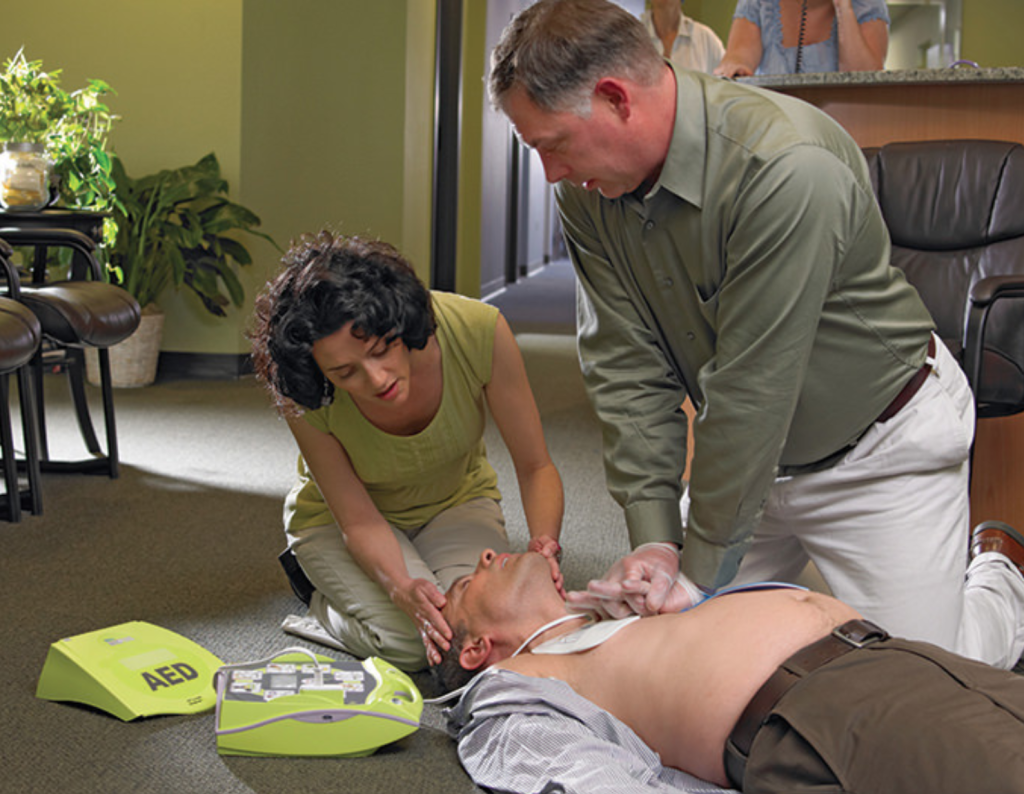5 Common Misconceptions About Defibrillator’s (AED’s)
An automatic external defibrillator (AED) can save lives.
AEDs provide access to life-saving care at your business, event, or public gathering and can be used by team members without the need for a medical degree. Unfortunately, many misconceptions about AED management often prevent people from installing or learning how to use one. It’s time to address these issues to make you and your employees or residents more comfortable with AED use.
Myth #1 – AEDs Are Hard To Use
Modern technology is pretty amazing, and that’s true when it comes to modern defibrillation devices. Instead of wading through a large instruction book to learn how to operate an AED in times of emergency, the staff is trained upon device installation in AED management. Even an untrained person could manage to use an AED, the technology is that user-friendly. Upon powering on an AED, the device itself provides walk-through instructions from start to finish. It’s virtually foolproof.
Myth #2 – I Will Be Held Liable If Something Happens
While it is a litigation-happy world, it is a myth that providing AED resuscitation assistance to a person will put you at risk for a lawsuit. Good Samaritan laws were put in place to offer just this kind of protection, prompting bystanders to take action that can greatly reduce further injury and even death. Since only 8% of patients survive out-of-hospital cardiac incidents, defibrillation is encouraged. All jurisdictions in the United States provide some level of immunity to AED users, 60% require public access defibrillation maintenance, 59% require emergency medical service notification, 55% impose training requirements, and 41% require medical oversight. Understand more with PlusTrac’s resource on AED Laws now.
Myth #3 – You’re Going To Shock Someone That Doesn’t Need It
In the year 2019 — this just can’t happen. Modern safety checks are built into each AED so that you can’t shock someone you’re not supposed to. Every AED analyzes the patient and looks for two specific rhythms indicating cardiac distress, the AED will only shock if the rhythm is found. Accidental shocking is now only part of Hollywood entertainment.
Myth #4 – Emergency Services Will Be Slower If We Have an AED
This myth is simply false. Emergency responders do not delay service based on AED presence. In fact, a registered AED can provide 9-11 responders additional resources to support you over the phone while you’re waiting for help to arrive. Operators can help you locate registered devices by guiding you through your building, and even help dispatch a volunteer responder if there is one nearby. This emergency treatment may help you buy the minutes needed to stabilize an injury while waiting for that ambulance to arrive.
Myth #5 – AEDs Are Expensive Equipment For a Very Rare Occurrence
Sudden cardiac arrest is a lot more common than most people think. Over 320,000 people experience these events outside a hospital each year, with very low survival rates. In a situation where every second count, AEDs can buy life-saving time. And this life-saving technology is affordable. Over a ten-year period, the average AED will cost about only about $130-$300 per year to own, as technology advances costs continue to improve for the value of what you purchase.
Don’t let the myths and misconceptions about AEDs prevent you from offering this safety net to your employees.
Call Now to speak with an AED Specialist
Click Here to learn more about AED’s
Source: https://www.plustrac.com/plustrac-blog/5-common-misconceptions-about-aed-use?utm_content=95272284&utm_medium=social&utm_source=linkedin&hss_channel=lcp-913526

